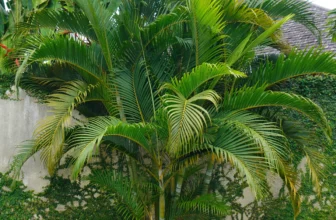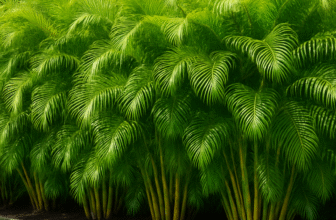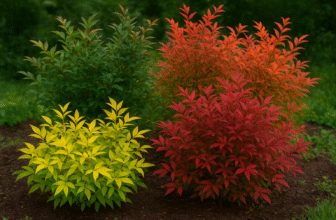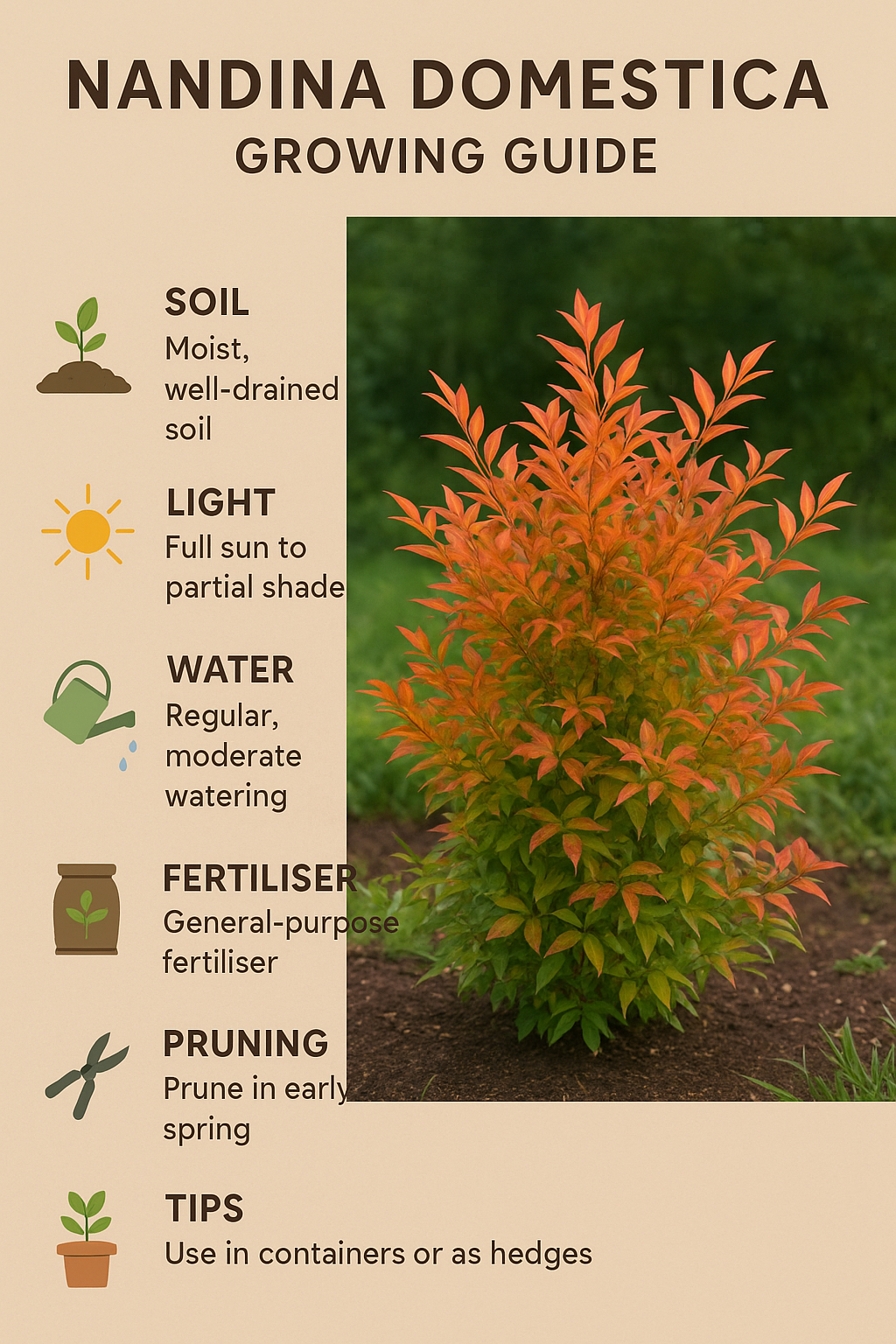In Australia’s harsh climate, plant lovers seek tough yet stunning plants, and Eremophila nivea, the silky emu bush, with its glowing foliage, lilac blooms, and bird-attracting charm, is taking Aussie gardens by storm. Even better?
Whether you’re a seasoned gardener or someone with no soil at all, you can enjoy its silver charm, naturally or with artificial Eremophila nivea for interior spaces.
Let’s explore both real and faux options and see how this silvery star can transform your home or garden in 2025
What Is Eremophila Nivea?
- Silvery, velvety foliage that seems to glow in sunlight
- Tubular lilac to mauve flowers bloom from spring to summer
- Drought tolerance and low water needs once established
- Attracting birds and bees, especially honeyeaters
Native to Western Australia, it grows to approximately 1–2 metres high and wide, forming a soft, bushy mound. But here’s the exciting part: thanks to grafted varieties, even gardeners in humid coastal zones can now enjoy its beauty.
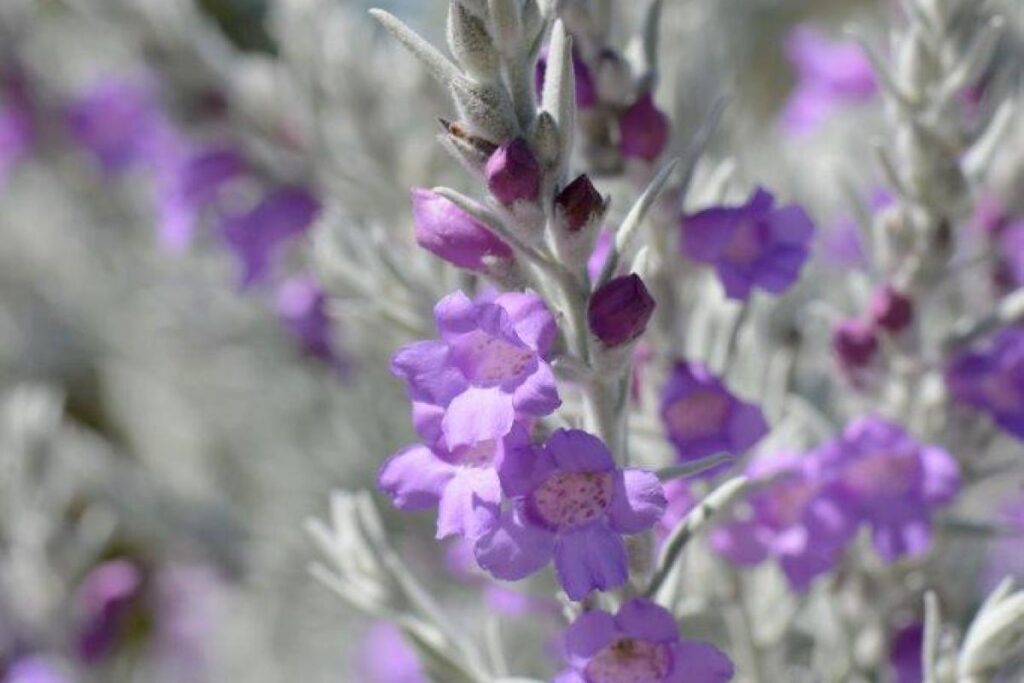
Why You’ll Love Eremophila Nivea in Your Garden
- Stunning Silver Colour: Its foliage adds a cool, calming effect to hot, dry landscapes.
- Low Maintenance: Requires minimal watering once established and thrives in poor soil conditions.
- Eco-Friendly: Perfect for water-wise gardens and supports native wildlife.
- Grows in Pots or Ground: Great for balconies, small gardens, or large native landscapes.
- Pairs beautifully with Other Natives: Looks amazing with Kangaroo Paw, Grevillea, Banksia, Lomandra, or Westringia.
“Eremophila nivea isn’t just surviving the Australian summer; it’s shimmering through it. That’s not gardening – that’s alchemy.”
Quick Reference Table: Eremophila Nivea Growing Guide
| Factor | Requirements | Pro Tip |
| Sunlight | Full sun (6+ hrs daily) | Best performance in open, bright spots |
| Soil | Very well-drained, sandy or gravelly | Raise beds or amend clay with sand/gypsum |
| Water | Low once established | Deep soak first summer, then reduce |
| Size | 1–2 m high and wide | Space 1.5 m apart for a silver hedge |
| Flowering | Spring to summer | Tip prune post-flowering for more blooms |
| Hardiness | Light frost-tolerant (Zones 10a+) | Protect young plants from frost |
| Humidity | Prefers dry climates; choose grafted types for humid areas | Grafted plants resist fungal issues |
| Best Use | Hedges, specimen plants, sensory and Mediterranean gardens | Looks striking against dark fences |
Growing Eremophila Nivea Like a Pro (2025 Tips)
1. Sun & Soil
- Allow it to receive 6 hours or more of direct sunlight daily.
- Plant in well-draining soil – sandy, rocky, or gravelly.
- Avoid clay soils unless you build raised beds or add gypsum + sand.
2. Watering
- Water deeply when planting and throughout the first summer.
- Once established, it’s incredibly drought-tolerant.
- Avoid overwatering – soggy roots are a death sentence.
3. Pruning
- Lightly prune right after flowering.
- Tip prune regularly to keep a bushy shape and more flowers.
- Never cut into old wood.
4. Grafted vs. Own-Root
- Grafted plants = game-changer for humid/coastal climates.
- Ask native nurseries for grafted Eremophila nivea – more robust, longer life, and less disease.
5. Fertilising
- Use low-phosphorus native fertiliser in early spring and autumn.
- Avoid high-phosphorus products – they harm native roots.
6. Growing in Pots
- Yes, you can grow it in containers!
- Use a native potting mix with excellent drainage.
- Select pots that are twice the size of the root ball, ensuring they have drainage holes.
- Light feeding and minimal watering are needed.
Design Ideas: Create a Silver Masterpiece
Eremophila nivea is more than a plant – it’s a design tool for modern Australian gardens.
- Specimen Plant: Let it shine alone in a gravel bed or rock garden.
- Silver Hedge: Plant 1.5 m apart for a shimmering border.
- Mixed Native Garden: Combine with yellow Kangaroo Paws, orange Grevillea, and purple Westringia.
- Contrast Planting: Pairs well with deep greens and purple foliage.
- Sensory Gardens: Velvety leaves add a tactile element along walkways.
- Containers & Courtyards: A standout feature in native-themed pots.
Common Problems and How to Fix Them
| Problem | Cause | Fix |
| Fungal Disease | Poor air circulation, humidity | Choose grafted plants; space well; avoid overhead watering |
| Leggy Growth | Not enough sun; no pruning | Move to full sun and tip prune regularly |
| Yellow Leaves | Overwatering or poor drainage | Improve soil or reduce watering |
| Poor Flowering | No pruning or poor sunlight | Prune after bloom, ensure 6+ hrs of sun |
| Stunted Growth | Clay soil or root rot | Improve the soil or reduce watering |
Where to Buy Eremophila Nivea in Australia (2025)
For optimal results, purchase grafted plants from reputable native nurseries or online suppliers of native plants. Ask your local nursery or check:
- Australian Native Nursery (WA)
- Kuranga Native Nursery (VIC)
- Online shops like AllNatives.com.au or GardeningWithAngus.com.au
- Look for healthy foliage, firm graft unions, and good drainage in pots.
Where & How to Use Artificial Eremophila Nivea:
- Table Centerpieces: Combine faux Eremophila stems with other native plants, such as banksia or wattle.
- Wall Décor: Add it to vertical greenery walls for a soft, silvery texture.
- Bathroom Styling: Ideal for moisture-prone areas where real plants may struggle to thrive.
- Retail/Office Displays: Zero upkeep but full visual impact.
- Event Decor: Wedding arches, bouquets, and backdrops — without worrying about wilting.
With high-quality faux options available in Australia, even plant lovers can mix real and artificial for a consistent aesthetic year-round.
Landscaping & Styling Ideas (With Real or Faux Eremophila Nivea)
🌿 Design Tips:
- Use it as a standout feature plant
- Pair with purple Westringia, kangaroo paws, and Lomandra
- Create a drought-tolerant border with silver tones
🖼️ Modern Uses:
- Against dark fences or rendered walls for contrast
- In Mediterranean or native gardens
- In contemporary indoor arrangements (artificial)
Final Thoughts: Plant It & Be Proud
- Eremophila nivea isn’t just another pretty native – it’s the perfect blend of beauty, resilience, and biodiversity.
- Whether you’re designing a dry garden, creating a sensory space, or building a native haven for wildlife, this silver-leaved gem delivers on all fronts. Choose grafted if you’re in humid zones, prune smart, and let it shine.
- “Grow Eremophila nivea, and you’re not just gardening – you’re celebrating the spirit of Australia.”
- Ready to plant? Head to your nearest native nursery, pick the best grafted variety, and let the silvery magic begin!
- Loved this guide? Share your silky emu bush photos, tips, or questions in the comments below. Let’s spread the native love across Australia in 2025!
Good to know (Australia 2025 Edition)
Most Asked FAQs (Australia 2025 Edition)
Is Eremophila nivea hard to grow?
No! Choose the right spot — full sun and free-draining soil — and it’s low-maintenance.
Can I grow Eremophila nivea in humidity?
Yes, but use a grafted variety for better resistance to fungal issues.
What’s the difference between grafted and own-root Eremophila nivea?
Grafted types thrive in humid or wet areas; own-rooted varieties suit dry inland climates.
Can I grow it in a pot?
Absolutely. Use a native potting mix and ensure excellent drainage.
Why are my Eremophila nivea leaves yellow?
Likely due to overwatering or poor soil drainage—adjust accordingly.
Where can I buy artificial Eremophila nivea in Australia?
Many online native décor retailers now offer realistic, UV-resistant faux options.
Is artificial Eremophila nivea a good choice for indoors?
Yes — it’s perfect for indoor styling, needs no care, and offers year-round beauty.


